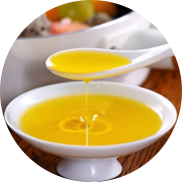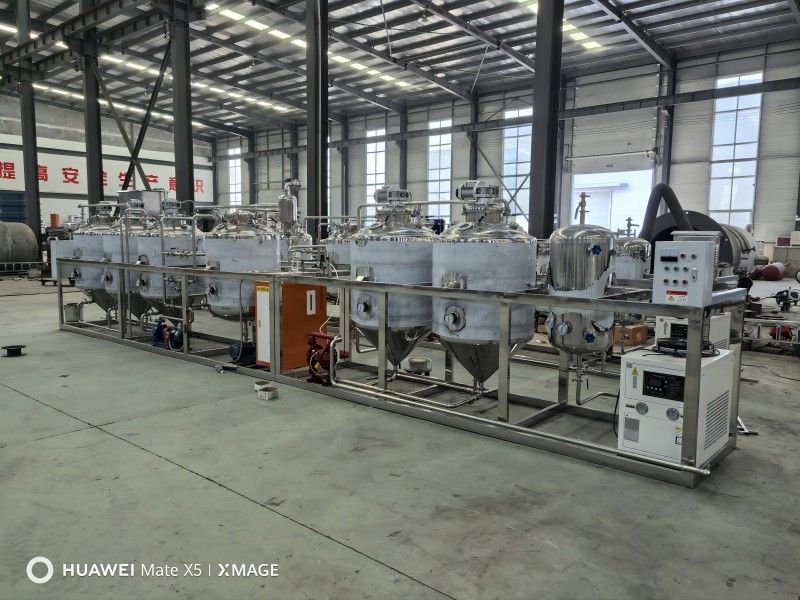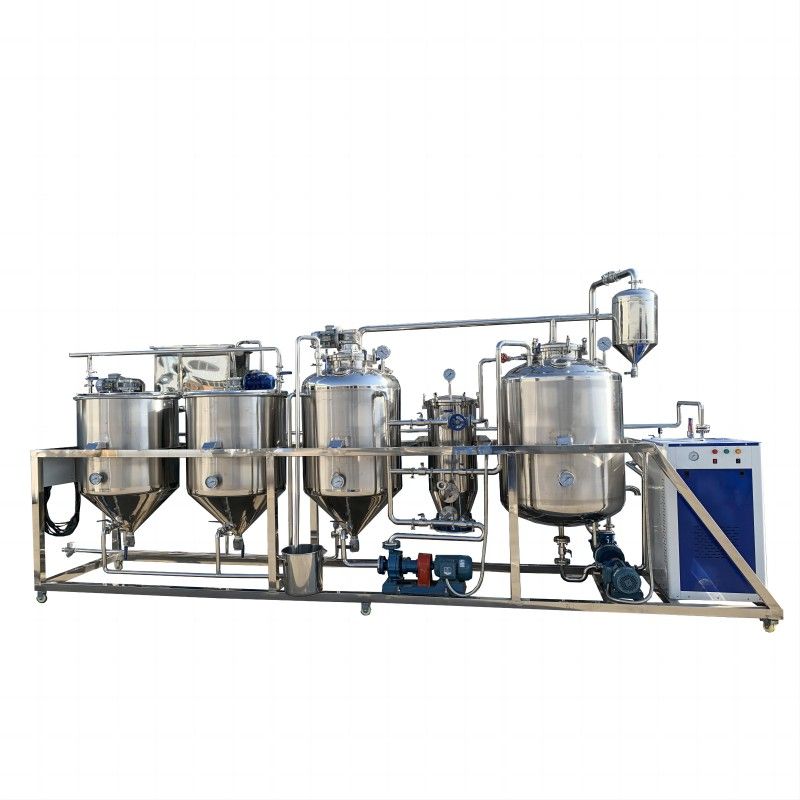153-0373-2222
138-3908-0089
This equipment set is designed for intermittent refining and includes all the functions of larger and medium-sized refining equipment.
The set is complete with its own heat source, electrical control, and is lightweight with low energy consumption. Customers only need to connect to electricity and tap water (a 2-meter high water tank is also acceptable), prepare a small amount of coal or wood, caustic soda, phosphoric acid, and clay, and the equipment can be used indoors or outdoors without a dedicated factory or foundation.
Hongyang's small refining equipment is suitable for refining various animal and vegetable oils. After alkali refining, de-gumming, de-acidification, de-coloring, and de-odorizing, the oil quality can reach the national first and second-grade standards. The equipment requires a small investment but with a quick profit return. and is compact in structure with an aesthetically pleasing layout.
The operation process for refining edible oils is as follows:
The crude oil is pumped into the refining pot for de-gumming and neutralization. When the oil and soap are clearly separated and rapidly sink, stop stirring, allow to settle, and then pump the upper clear oil to the water washing pot. The soap foot is drained from the bottom to the soap foot container, and when it contains more oil, stop draining and pump the soap foot into the soap foot container. The remaining oil in the refining pot is mixed into the next pot for continued processing.
The clear oil from the refining pot is washed and then goes to the de-coloring pot for adsorption de-coloring. The de-colored oil is pumped to the plate filter for filtration and then to the polishing filter for further filtration. After cooling in the cooler, it enters the de-colored clear oil tank. The de-colored clear oil is sucked from the tank into the de-odorizing pot for de-odorizing under a residual pressure of 3-5 torr. The de-odorized oil is placed in the heat exchanger tank, and after being emptied, the next batch of de-colored clear oil is sucked through the heat exchanger into the Hongyang de-odorizing pot for the next round of de-odorizing. The de-odorized oil from the heat exchanger tank is cooled with cold water, pumped for polishing filtration, and then enters the finished oil tank.
Process Flow:
Crude Oil → Alkali Refining → Water Washing → De-coloring → De-odorizing → Finished Product
Main Equipment Description:
Neutralization Pot: For acid refining, alkali refining, and water washing;
De-coloring Pot: For bleaching oils and removing pigments;
De-odorizing Pot: For removing the odor from oils;
Heat Transfer Oil Furnace: Provides the required heat energy for production;
Vacuum Pump: Provides the vacuum required for de-coloring and de-odorizing;
Air Compressor: Dries the de-coloring clay;
Press Filter: Filters the clay;
Steam Generator: Generates steam for de-odorizing distillation.
Main Features: Simple operation, low investment, suitable for refining various oils such as soybean, rapeseed, cottonseed, peanut, tea seed, and walnut oil with a daily capacity of 30 tons or less.



























































